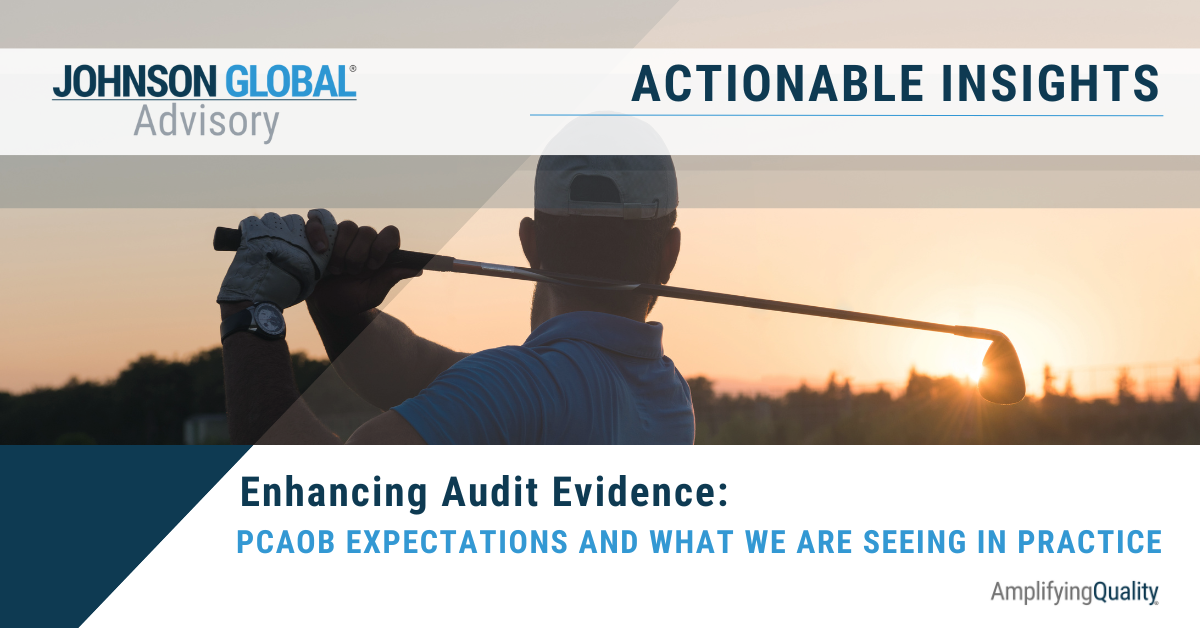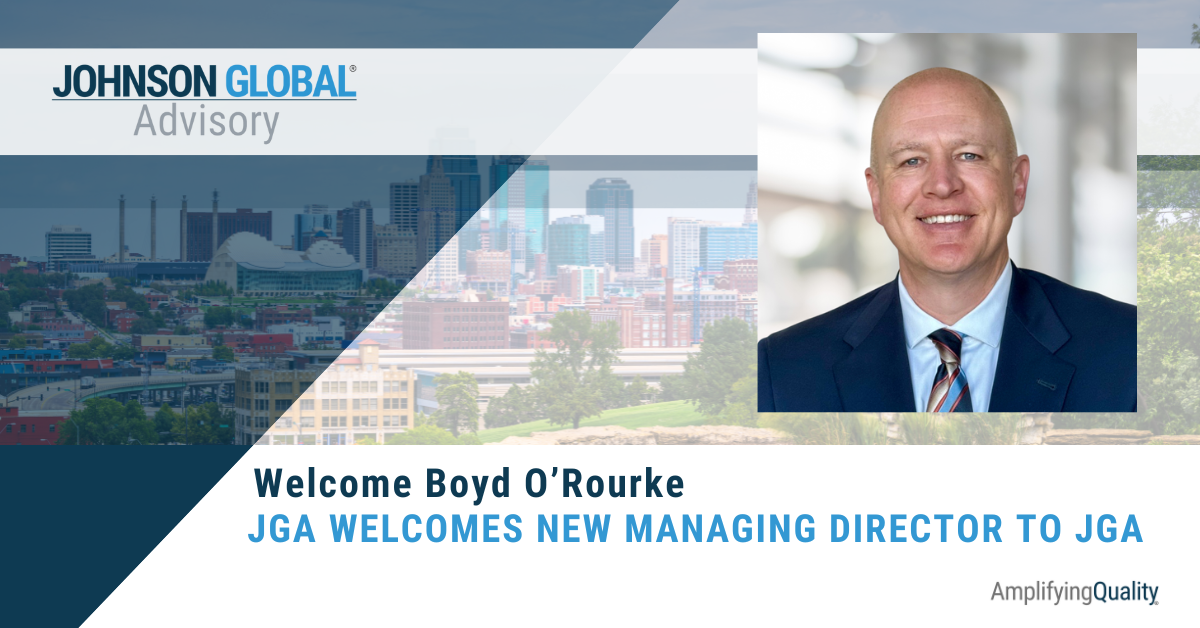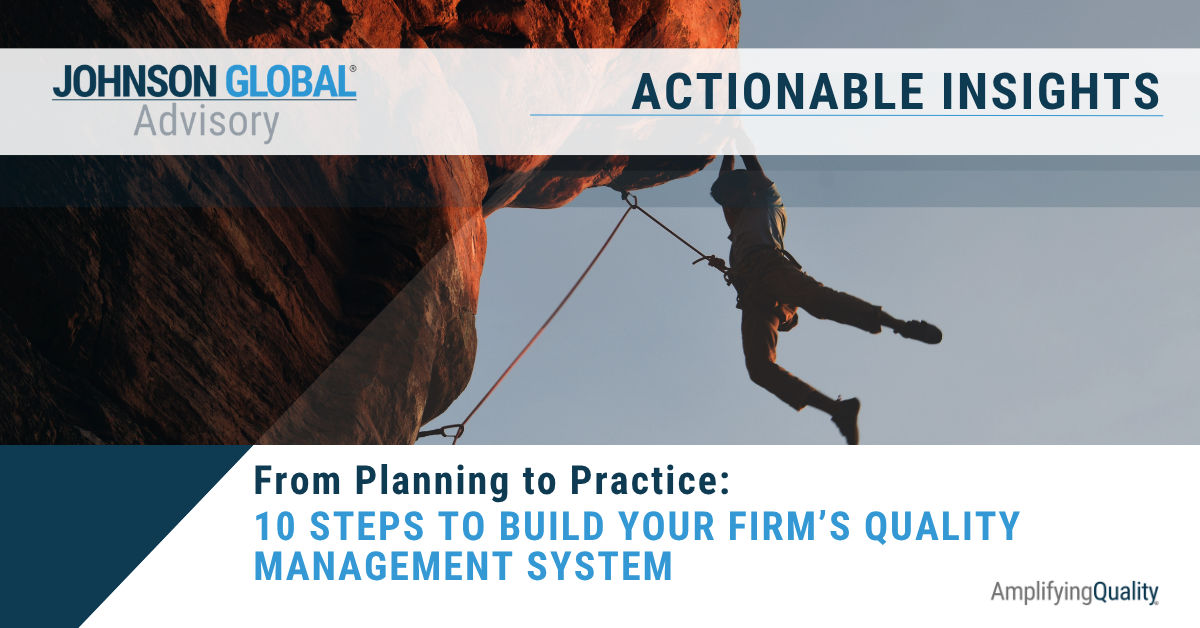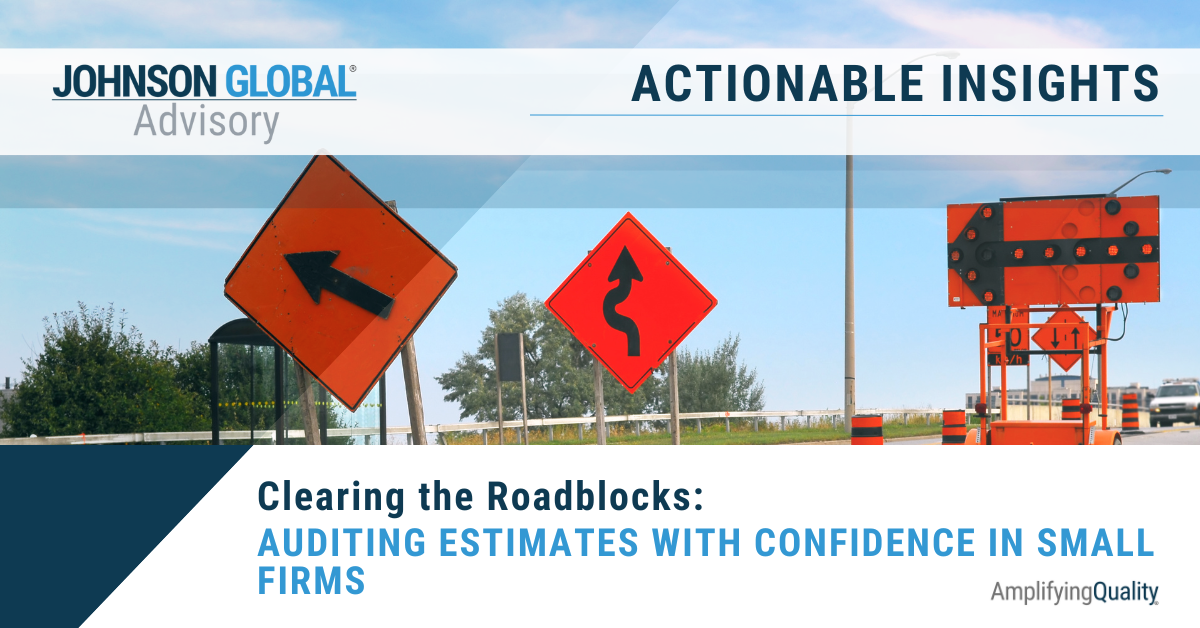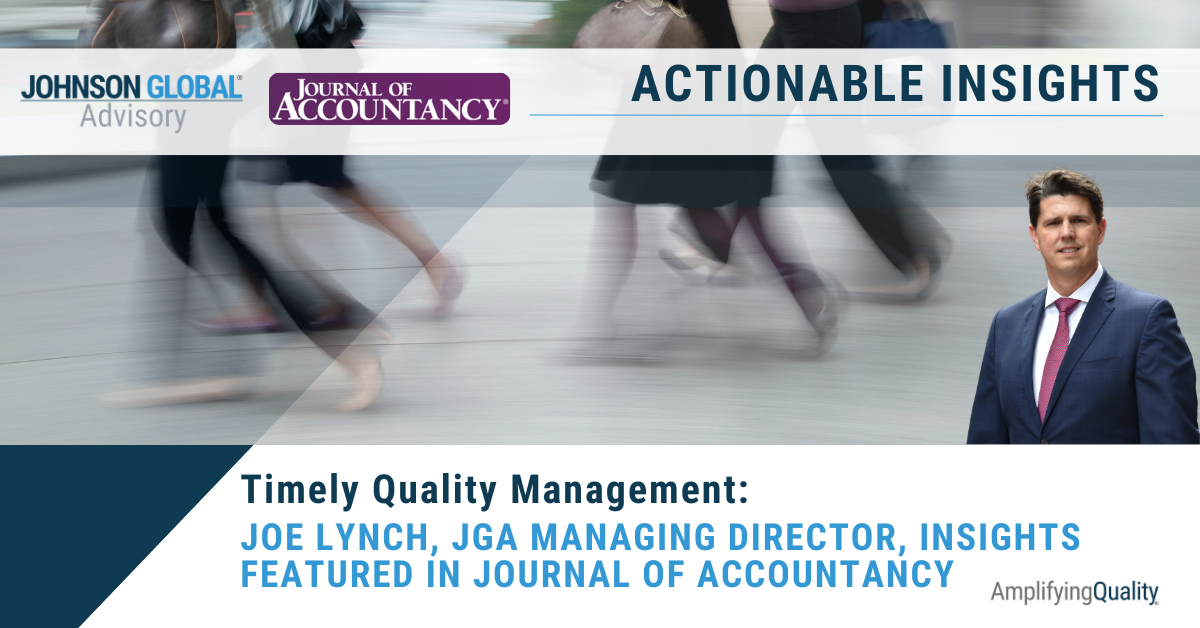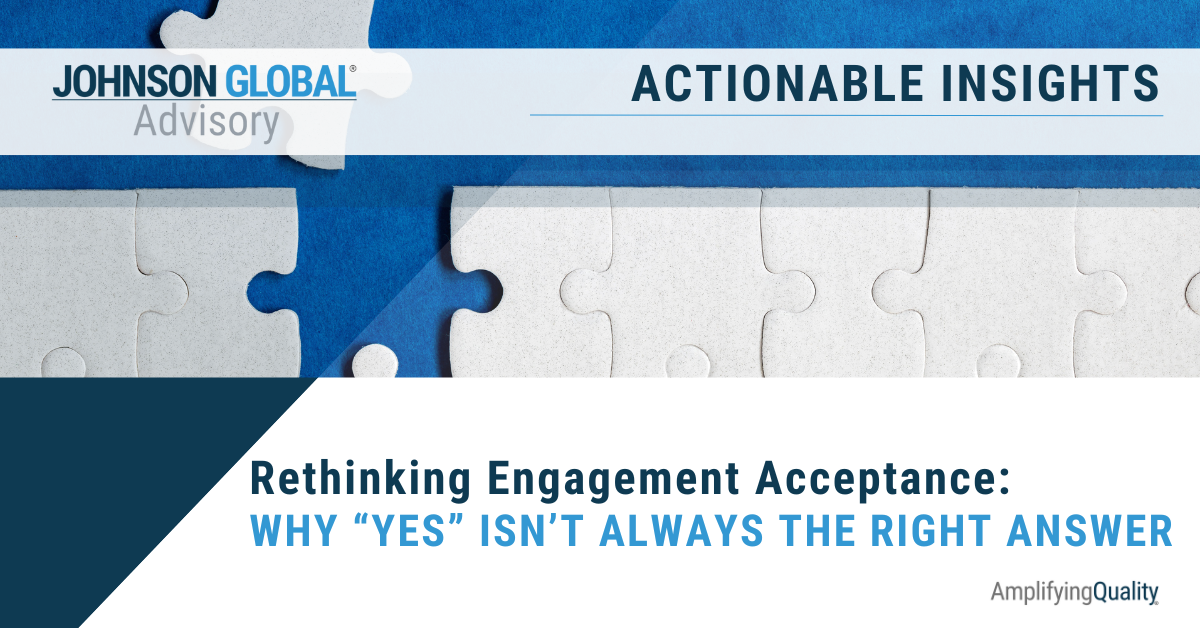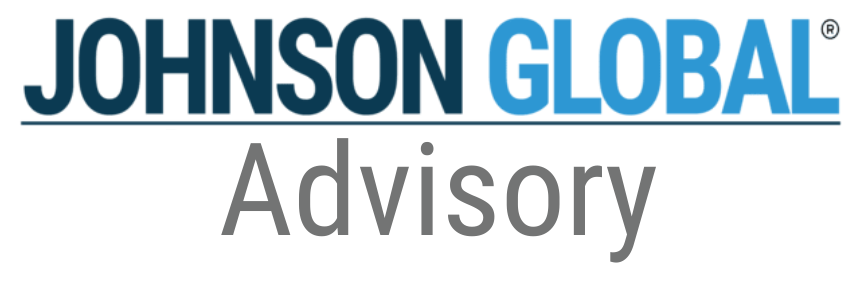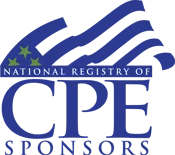Revisiting Risk Assessment Under SAS 145 Part I: Identifying Significant Risks

In January of 2022, we wrote about the fact that given some of the newly issued AICPA guidance, the differences between AICPA and PCAOB audits is increasingly diminishing. Although not convergent, there is a move within the audit industry to increase alignment. This is true within the US as well as at a more global level. Is it coincidence that AU-C 315, CAS 315, and ISA 315 all have the same number and all deal with risk assessment? As a follow-up to our previous article, we are going to explore two key elements of the new SAS 145 guidance. In this first article, we are exploring some of the renewed focus on risk assessment. In a second article, we will explore the new requirements around understanding the design and implementation of controls with a focus on further developing our knowledge of information systems and the risks they present in an audit.
In working with engagement teams, we get our fair share of consultations asking to brainstorm how to audit a specific account or transaction. Typically, the first question is, “what is the overall risk of material misstatement?” After all, doesn’t everything begin with risk assessment?
While we may all acknowledge this reality, so often, teams consider the nature of the procedures performed to determine whether something is a significant risk. And we get it. Until the new AICPA standards were released, specifically SAS 145, the previous guidance defined a significant risk as follows:
“An identified and assessed risk of material misstatement that, in the auditor's professional judgment, requires special audit consideration.”
In other words, a significant risk was determined based on the necessity for special audit consideration. In all fairness, the guidance in AU-C 315 does also provide additional considerations in paragraphs 28 and 29 regarding significant risks. All that changed however with the new SAS 145 which now defines a significant risk as:
An identified risk of material misstatement
i. for which the assessment of inherent risk is close to the upper end of the spectrum of inherent risk due to the degree to which inherent risk factors affect the combination of the likelihood of a misstatement occurring and the magnitude of the potential misstatement should that misstatement occur, or
ii. that is to be treated as a significant risk in accordance with the requirements of other AU-C sections. (i.e., fraud risks)
The new definition is still a bit “convoluted” but at least it is pointing engagement teams to the inherent risk factors as opposed to the procedures performed1.
Okay, so we have improved the definition of significant risks, but what is the big deal? The issue we are seeing in the industry is a failure of engagement teams to properly identify and document risk assessment and specifically, significant risks. Increasingly, when we support our clients on PCAOB inspections and firm’s counsel as an expert in enforcement investigations, we see the regulators challenge engagement teams on their identification of significant risks. What inspection and enforcement staff are getting at is: if the risk assessment is wrong, the audit approach is also inherently wrong.
Assessing the Overall Risk of Material Misstatement
As part of planning an audit, engagement teams develop an understanding of the entity through inquiries with management, reading press releases and interim financial statements, and performing preliminary analytics, among other procedures. Don’t forget that in the new SAS 145 guidance, teams are required to obtain an understanding of the design and implementation of internal controls. This new requirement, which has been the expectation under PCAOB standards, is required regardless of whether the team plans to rely on controls; this is a foundational part of understanding the entity. From this knowledge, teams can begin to understand the likely sources of potential misstatement which enables teams to perform a complete and robust risk assessment. Based on that understanding of the entity and the financial statements, the engagement team performs its risk assessment with the overall risk of material misstatement being predicated on the separate evaluation of inherent risk and control risk.
Inherent risk is the susceptibility of an assertion (linked to a class of transactions, an account balance, or a footnote) to misstatement that could be material, either individually or when aggregated with other misstatements before consideration of controls. The key here is to ignore controls. AICPA and PCAOB guidance provide examples of risk factors including nature and size of the account/class of transactions, volume of transactions, complexity, homogeneity, exposure to losses within an account, degree of uncertainty and subjectivity in estimates, changes from prior periods related to accounting / disclosure, related party considerations, susceptibility to misstatement due to error or fraud, as well as susceptibility to management bias and judgement. Though not exhaustive, you get the point. Inherent risk is based on the nature of the account itself.
Control risk is the risk that a misstatement could occur that could be material, either individually or when aggregated with other misstatements, will not be prevented or detected on a timely basis by the entity’s system of internal control. This part of risk assessment is simpler; to reduce high control risk, engagement teams must test the operating effectiveness of controls. In other words, is the engagement team relying on controls or not?
Based on inherent risk and control risk, the engagement team then considers the overall risk of material misstatement. The specific identification of significant risks varies from firm to firm. Some methodologies build in the identification of significant and/or fraud risks into the inherent risk assessment and some have a separate consideration. There is no right or wrong way here, but the point is to be sure that the risk assessment incorporates clear documentation around significant and fraud risk identification. When identifying significant risks, the literature places a huge emphasis on related party transactions, complex accounting, estimates (given the subjectivity, uncertainty), as well as significant unusual transactions. These items are not automatically default significant risks, but they have a much higher likelihood of being a significant risk (depending on materiality). Keep in mind that just because an account is immaterial does not inherently mean there is no risk of material misstatement; this is where understanding the nature of the account or the qualitative nature of a disclosure is important. For instance, an immaterial allowance for doubtful accounts does not mean there is no risk of material misstatement. As a reserve account, the engagement team needs to consider the risk of understatement when concluding on magnitude and whether an account poses a risk of material misstatement. The same can be said for qualitative disclosures. Materiality is not purely a quantitative consideration.
Nature, Timing, Extent of Audit Procedures
Once risk assessment is completed, the next step is to then design the nature, timing, and extent (or NTE) of the audit response.
The nature of the audit approach can be broken down into various considerations:
- Control test vs. substantive test
- Within control testing, the nature of the test, such as inquiry, observation, inspection or reperformance
- Within substantive testing, the use of analytical procedure vs. tests of details
- For both controls and substantive testing, consideration around the use of work of others and review considerations such as reliance vs. reperformance
Timing is a function of when is the testing being performed (i.e., interim vs. year-end test work) and what balance is being tested (i.e. an interim balance or the year-end balance). Generally, the higher the risk, the more we expect testing performed at year-end (i.e., with the most up to date information) and/or testing performed over year-end balances. Interim testing can certainly be useful, such as testing predictable, often low-risk prepaid balances. However, for a significant accounting estimate (i.e., a significant risk), testing the Q2 balance may not be the best approach as it would require extensive roll-forward procedures to ensure the year-end estimate is also materially correct.
Finally, the extent is the amount of test work being performed. This is most often evidenced in the sample sizes used for controls and/or substantive tests of details. However, the extent could also be found in the mix of procedures performed. For instance, while a test of detail may cover the risk related to an assertion, engagement teams may also perform analytical procedures to obtain additional comfort, adding to the extent of testing.
There is nothing terribly new here. Engagement teams build out the audit plan based on overall risk assessment. And that is the key: risk assessment is so critical because it is the starting point for designing the appropriate mix of procedures. If the risk assessment is inaccurate and/or not thoroughly documented, how can anyone conclude on the appropriateness of the audit procedures to address the risk?
Easy as this concept may be, often when we take a step back and compare the audit approach for a significant risk vs. a normal / minimal risk, in theory, the audit approach should look different. And yet, we have often seen engagement teams use a judgmental sample of five to test a low-risk account and then also use a judgmental sample of five to test a moderate or high-risk account. How does this evidence any change in NTE? The theory and concepts are not hard; it is the application of the concepts and ensuring the audit approach adequately takes risk assessment into account that is difficult.
Documentation
After talking through risk assessment in a consultation, the next question is typically “where is this documented?” Often teams have the risk assessment documented in planning, but when we look at the list of significant risks communicated to the audit committee, it does not reconcile with the planning documentation. Or, when we compare the list of significant risks in the CAM evaluation tool, again, it does not reconcile. Primarily, the risk assessment needs to be consistent throughout the audit file. Second, the risk assessment needs to be thoroughly documented. While nothing in the auditing standards requires teams to document why something is not a significant risk, if there is any question and/or professional judgment applied, that needs to be captured in the documentation. If any of the significant risk factors (AU-C 315.29 or AS 2110.70-71) are present, then engagement teams should either a) identify a significant risk or b) document why those risk factors do not represent a significant risk.
What we are seeing is that absent documentation evidencing the engagement teams’ considerations and professional judgment, the PCAOB is challenging the identification of significant risks. In other words, if there is a material account that has complex, subjective assumptions or if there is a material significant unusual transaction and the engagement team did not identify a significant risk and did not document its considerations, then the PCAOB is challenging the evaluation. So, be consistent with the risks identified and be clear in the documentation in your audit file.
Common and Potential Pitfalls
Two common pitfalls we see, aside from the inconsistency of risk identification within an audit file, include:
- Forgetting about management override of controls: Most know that revenue has a presumptive fraud risk (and thus is a significant risk, by definition). However, often teams forget to document the presumptive risk of management override of controls. This risk exists, regardless of whether the engagement team is testing the operating effectiveness of controls. Journal entry testing, as required under AS 2401, is one procedure to address the risk of management override of controls, so teams often claim “it’s inherently considered a risk because we did JE testing” but this does not really demonstrate to the PCAOB how the engagement team considered the entity-specific risk of management override of controls and designed appropriate procedures to address the specific risk.
- Performing a thorough evaluation and review of significant risks: While the PCAOB often challenges the under-identification of risks, I have also seen repeatedly where teams will document a significant risk and then, when the audit approach is questioned during an inspection, the engagement team will provide a list of reasons why the audit approach was sufficient. Those reasons are typically linked to inherent risk factors that support why the risk is low. In other words, the engagement team identified a significant risk during planning, but now, when being forced to defend the audit approach, the engagement team is presenting an argument that the risk is in fact low and not significant. Why was it identified as a significant risk at the time of the audit then? Most of the time, I agree with the engagement teams, but that means the risk assessment was not correctly documented during the audit and/or the risk factors changed during the audit, but the team did not revisit risk assessment.
Two potential pitfalls we could see relate to the following:
- The new guidance from SAS 145 defines a significant risk as a risk that is “close to the upper end of the spectrum of inherent risk due…” While conceptually easy to understand, firms will need to make it clear to engagement teams what constitutes a significant risk and how to interpret this new definition. Does this mean all higher inherent risks are considered significant risks? What are the factors to be considered in delineating between higher risk accounts and significant risk accounts? Or perhaps firms will need to revisit methodologies and recalibrate the inherent risk scale to allow for more precise delineation so that all higher inherent risks are not automatically defaulted to significant risks.
- SAS 145 also includes a requirement to perform a “stand-back” analysis to ensure the completeness of the engagement team’s identification of significant classes of transactions and significant accounts. In other words, after performing the risk assessment, the engagement team needs to stand back and evaluate the potential risk of material misstatement for all classes of transactions and accounts that were not previously in scope. Is there a risk of material misstatement in aggregate? What assertions?
The point is not to go overboard and identify 20 significant risks. We have challenged teams on over-identification as well as under-identification. The point is to be thorough and complete and to capture the relevant judgments that go into performing risk assessment. Also, if the documentation incorporates the relevant risk factors and the engagement teams’ judgments around those risk factors, then the documentation should speak for itself. That is the goal.
Key Takeaways
- Remember to separately consider inherent risk and control risk.
- For significant, unusual transactions, complex accounting matters, and/or subjective accounting estimates, unless the amounts are obviously immaterial, consider documenting the professional judgment around why something is or is NOT a significant risk.
- Once significant and/or fraud risks have been identified, be sure the nature, timing, and extent of audit procedures are appropriately modified to address the specific risk.
- Document all professional judgment applied (and considered) when evaluating risk assessment.
- Risk assessment is an iterative process, so be sure to continue to update risks (as merited) throughout the audit and be sure risk assessment is consistent throughout all documentation within the audit workpapers, including audit committee communications.
